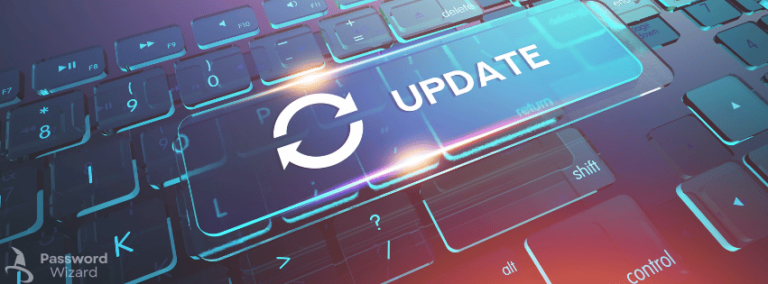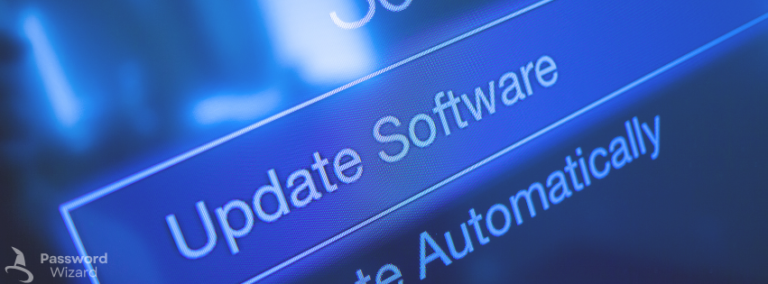In today’s fast-paced digital world, cybersecurity has become a critical aspect of our everyday lives. Whether you’re managing sensitive business data or simply browsing the internet for entertainment, staying safe online is essential. One of the most effective ways to protect your devices and personal information is by implementing regular updates . This includes changing strong passwords every 10 weeks and ensuring that all software is updated with the latest security patches. In this article, we’ll explore why regular updates are crucial, how they enhance security, and what steps you can take to make them a seamless part of your routine.
Why Are Regular Updates Important?
The concept of regular updates might seem straightforward, but its importance cannot be overstated. Cybercriminals are constantly evolving their tactics, developing new malware, phishing schemes, and hacking techniques to exploit vulnerabilities in outdated systems. Without regular updates , your devices and accounts remain exposed to these threats.
Protecting Against Exploits
Software developers regularly release updates to address bugs, improve performance, and—most importantly—patch security vulnerabilities. These vulnerabilities are often discovered after the initial release of a program or operating system. Hackers actively search for such weaknesses, knowing that many users delay or ignore updates altogether. By keeping your software up-to-date through regular updates , you close these gaps before attackers can exploit them. For more information on how vulnerabilities are exploited, check out this resource from Cybersecurity & Infrastructure Security Agency (CISA) .
Strengthening Password Security
Changing passwords every 10 weeks is another vital component of regular updates . Even if you’ve created a strong password, it may eventually become compromised due to data breaches or brute-force attacks. Updating your passwords on a consistent schedule ensures that even if one account is breached, others remain secure. Additionally, using unique, complex passwords for each platform minimizes the risk of widespread damage.
The Role of Strong Passwords in Regular Updates
Passwords act as the first line of defense against unauthorized access. However, not all passwords are created equal. A „strong” password typically includes a mix of uppercase and lowercase letters, numbers, and special characters. It should also avoid predictable patterns like „123456” or easily guessable information such as birthdays or pet names.
How Often Should You Change Your Passwords?
Experts recommend changing strong passwords every 10 weeks as part of your regular updates strategy. While some argue that frequent changes encourage poor password habits (e.g., writing them down or reusing old ones), this risk can be mitigated by leveraging password managers. These tools generate and store complex passwords securely, making it easier to maintain good practices without added stress. To learn more about creating strong passwords, visit NIST’s guidelines on password management .
Multi-Factor Authentication (MFA)
Pairing strong passwords with multi-factor authentication adds an extra layer of protection. MFA requires users to provide at least two forms of verification before accessing an account—for example, entering a code sent via text message or approving login attempts through an app. When combined with regular updates , MFA significantly reduces the likelihood of successful cyberattacks. Learn more about MFA best practices from Microsoft’s security blog .
Software Updates: Beyond Convenience
While updating software might feel like a tedious chore, it plays a pivotal role in maintaining digital hygiene. Here’s why staying current with regular updates matters:
Closing Security Gaps
Every piece of software—from operating systems to web browsers—is susceptible to flaws. Developers issue patches to fix known issues, including those related to security. Delaying these updates leaves your system vulnerable to exploits that could lead to data theft, ransomware infections, or complete device takeover.
Enhancing Performance
Regular updates don’t just focus on security; they also optimize functionality. For instance, updates may introduce new features, streamline processes, or resolve compatibility problems. By keeping your software up-to-date, you ensure smoother operation and better overall user experience.
Automatic vs. Manual Updates
Many modern applications offer automatic update options, which simplify the process of staying protected. However, manually checking for updates is still advisable, especially for critical systems like firewalls, antivirus programs, and firmware. This hybrid approach guarantees that no essential patch slips through the cracks. For insights into enabling automatic updates across different platforms, refer to Apple’s support page on software updates .
Best Practices for Implementing Regular Updates
To maximize the benefits of regular updates , consider adopting the following best practices:
Create a Schedule : Set reminders to change passwords every 10 weeks and review pending software updates monthly. Consistency is key when it comes to cybersecurity.
Use Password Managers : Tools like LastPass, Dashlane, or 1Password help generate and manage strong, unique passwords across multiple platforms. They also facilitate easy updates during scheduled intervals.
Enable Automatic Updates : Whenever possible, configure your devices and applications to install updates automatically. This ensures timely protection without requiring constant manual intervention.
Stay Informed : Follow trusted sources for cybersecurity news to stay ahead of emerging threats. Understanding potential risks empowers you to prioritize relevant regular updates .
Backup Your Data : Before applying major updates, back up important files to prevent accidental loss. Cloud storage solutions or external hard drives are excellent options for safeguarding your data.
Overcoming Common Barriers to Regular Updates
Despite their importance, many people neglect regular updates due to perceived inconvenience or lack of awareness. Below are common barriers and how to overcome them:
Perception of Effort
Some individuals view regular updates as time-consuming or disruptive. To combat this mindset, emphasize the long-term benefits of proactive security measures. Remind yourself that a few minutes spent updating now can save hours—or even days—dealing with the aftermath of a cyberattack.
Fear of Disruption
Occasionally, updates cause temporary glitches or require system restarts. While frustrating, these minor inconveniences pale in comparison to the potential consequences of skipping updates altogether. Plan updates during downtime to minimize disruption.
Lack of Awareness
Not everyone understands the significance of regular updates . Educating friends, family, and colleagues about cybersecurity basics fosters a culture of vigilance. Share resources, tips, and real-world examples to illustrate the importance of staying up-to-date.
The Bigger Picture: Regular Updates and Collective Security
Cybersecurity isn’t just an individual responsibility—it’s a collective effort. When you prioritize regular updates , you contribute to a safer digital ecosystem for everyone. Outdated systems and weak passwords create opportunities for hackers to launch large-scale attacks, affecting businesses, governments, and communities worldwide.
For organizations, enforcing regular updates is particularly crucial. Employee negligence often serves as the weakest link in corporate cybersecurity strategies. By implementing policies that mandate frequent password changes and prompt software updates, companies can reduce their exposure to costly breaches.
Final Thoughts
In conclusion, regular updates form the backbone of effective cybersecurity. From changing strong passwords every 10 weeks to installing the latest software patches, these simple yet powerful actions shield you from ever-evolving threats. By incorporating regular updates into your daily routine, you not only protect yourself but also contribute to a more secure online environment for all.
Remember, cybersecurity is a journey, not a destination. Stay informed, stay vigilant, and embrace the habit of regular updates . Your digital future depends on it.
Read more:
- Free Online Password Generator Tool – Generate Strong Passwords
- Unique Passwords: The Key to Online Security
- Avoid Predictable Information in Passwords
- Two-Factor Authentication 2FA
- Secure Storage
- Browser Safety Tips: Protect Your Passwords Online
- Encrypted Connections: Safeguarding Your Online Activities
- Regular Updates: The Key to a Secure Digital Life
- Device Security : Protect devices with firewalls, antivirus software, and physical locks
- File Integrity
- Phishing Awareness
- Developer Best Practices
- Business Security



